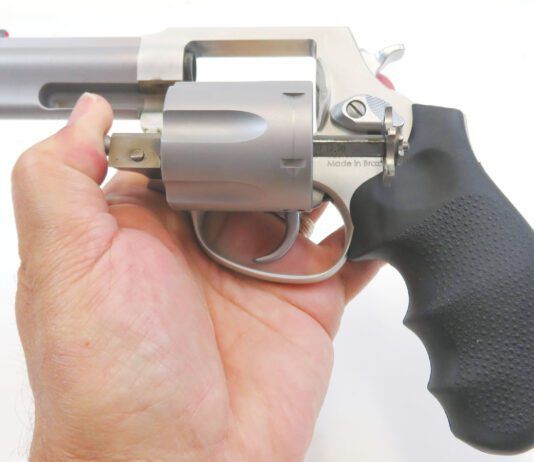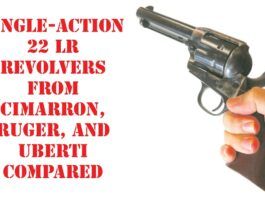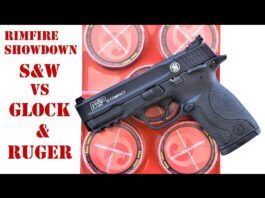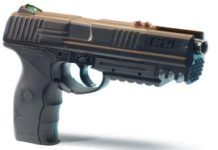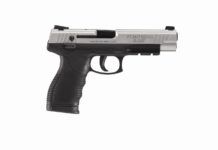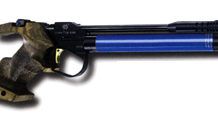Crosman Introduces Three New CO2 Semi-Auto BB Repeater Pistols
ROCHESTER, New York, Responding to consumer demand, Crosman, a leading international designer, manufacturer and marketer of products for the shooting sports, has added three new CO2 powered, semiautomatic, BB repeater pistols
Pennsylvania Pro-Open-Carry Spokesman Detained by Police
The Citizens Voice newspaper in Wilkes-Barre, Penn., has reported that the operator of the pro-open-carry site paopencarry.org. was detained by police after having his gun confiscated.
Guns and Gas
A Butler, Missouri, car dealership is offering a free handgun with every purchase of a used car.
Taurus Offers New Version Of The Popular OSS
New for 2008 Taurus offers this sidearm in Stainless Steel with black checkered grips in .45 ACP, .40 cal and 9mm.
Taurus 800 Semi-Auto Pistol Series
The 800 Series, available in .45 ACP, .40 cal and 9mm, features Taurus’ industry changing “Strike Two” capability.
Taurus’ 856 Revolver
MIAMI – New for 2008 Taurus pushes its small frame revolvers to the next level with the Model 856.
Kimber Stainless Target .38 Super
Point and shoot handling and exceptional rapid fire capability makes this is a formidable defense gun. Based on our action tests our shooter was able to place two shots on a five yard target about 0.25 seconds sooner than with our other test guns. This could make its 9+1 capacity, (which is better than other 1911s), academic when compared to the higher capacity pistols.
Public Continues to Oppose Banning Handgun Sales
…The latest survey by the Pew Research Center for the People & the Press, conducted April 23-27 among 1,502 Americans, finds that public attitudes about gun control also have shown little change in recent years.
Harris Poll: Does the Second Amendment Provide the Right to Bear Arms? U.S. Adults...
…In the next few weeks the U.S. Supreme Court is expected to decide D.C. v. Heller, which concerns whether the District of Columbia's ban on handguns violates the Second Amendment of the U.S. Constitution. The question that the Supreme Court will be answering is whether the Second Amendment actually provides an individual with the right to own a gun or whether it provides the state the ability to form a militia.
Ohio State Students Learn about “Our Kind” of Gun Control
…The course, International Air Pistol, is offered through the same department as physical education courses, such as boxing and fencing, and teaches students of all majors the fundamentals of safe handgun use following both National Rifle Association and Ohio laws. Students are introduced to the sport through classroom training and shooting-range application.
OKC Police Chief Wants Tighter Gun Laws
…Citty, speaking at a news conference by a coalition of social services, clergy and community groups opposed to gang violence, said he believes in a citizen's right to carry firearms but that too many guns are reaching the hands of gang members.
Missouri Bill Offers Firearm Upgrades
…The bill also removes residency requirements for concealed carry permits. Under current law, residents must live in Missouri for six months before they can receive a permit. The new legislation waives the six month requirement for those who already possess a valid permit from another state.

























